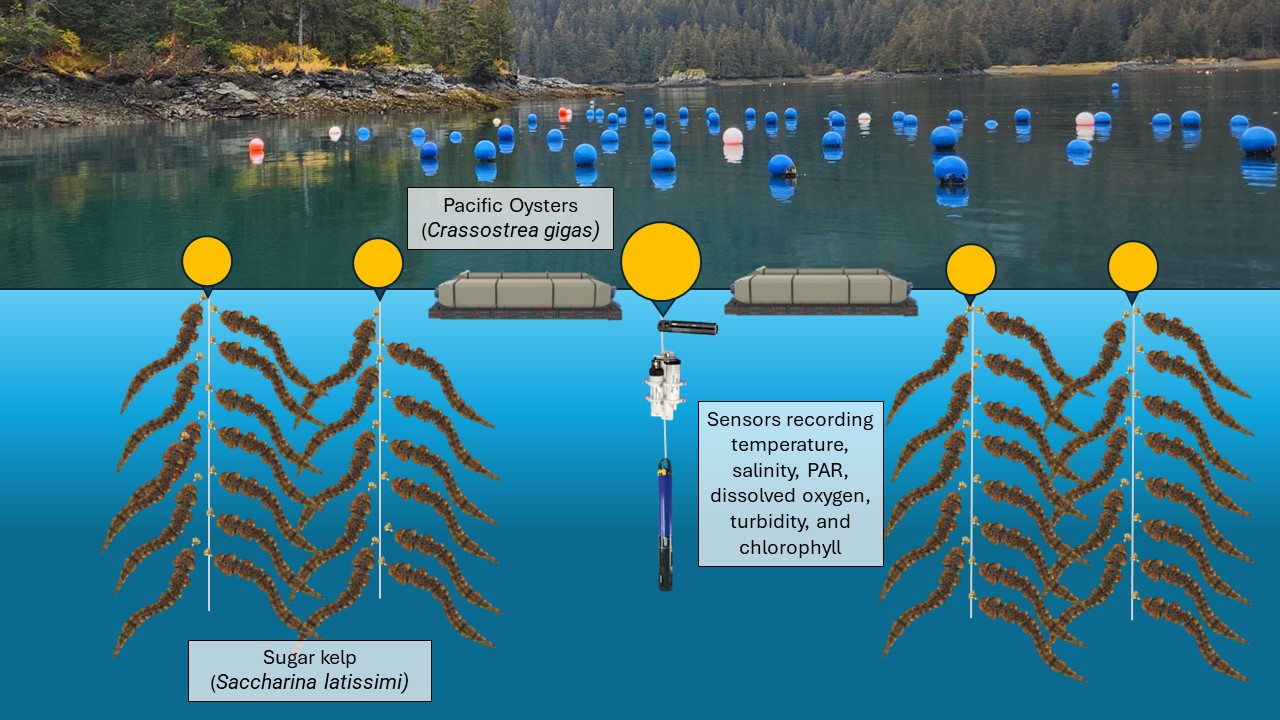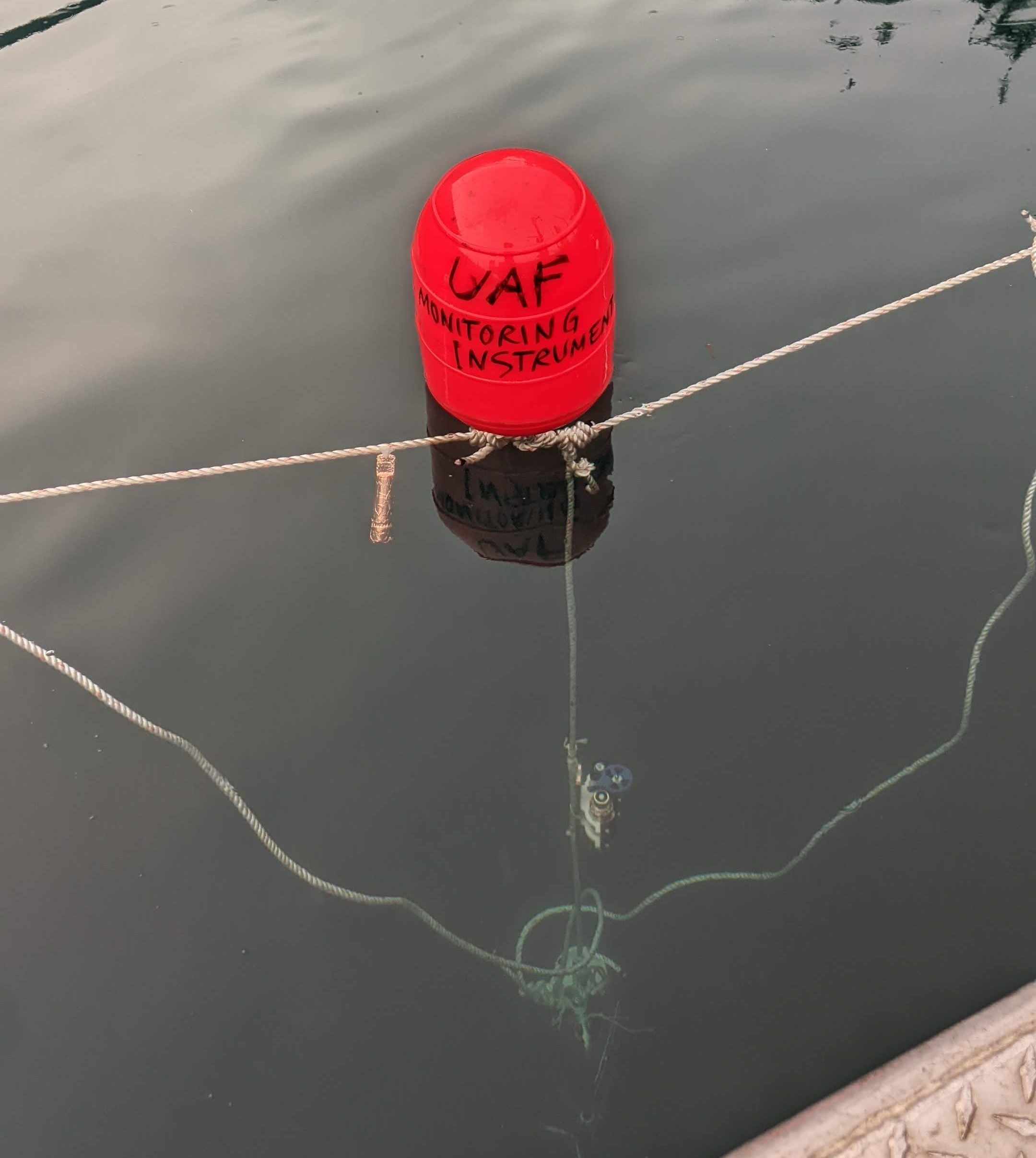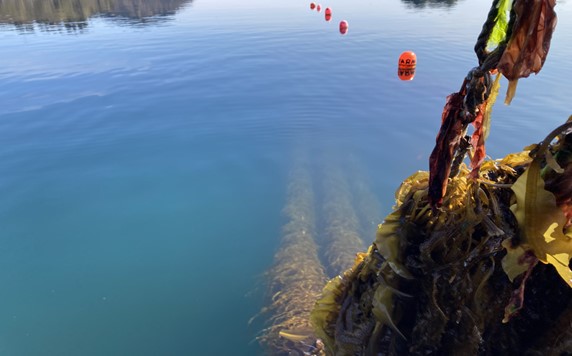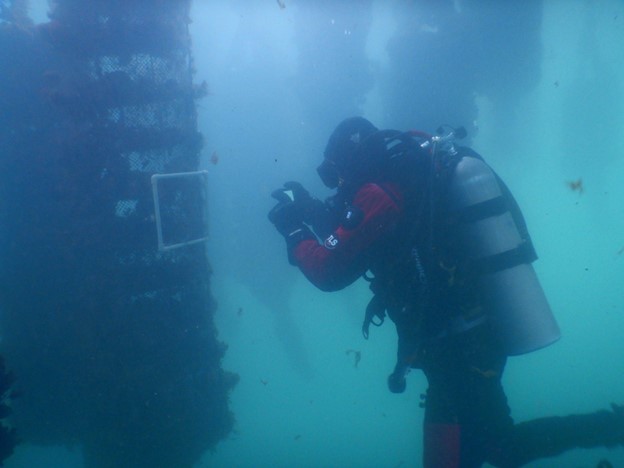Studying environmental drivers of production on mariculture farms

PROJECT
Studying the Environmental Drivers of Production on Mariculture Farms
Mariculture Research and Restoration Consortium: Mariculture and the Physicochemical Environment & Drivers of Regional Variation in Production
Background
While it is no secret that the Gulf of Alaska has beautiful, productive waters, it is not yet known where and to what extent these waters can support the growth of the developing mariculture industry. Obtaining a permit to start an aquatic farm can be a lengthy and expensive process. To better select new sites that will provide for the best crop growth, data on environmental conditions in each region of the Gulf is needed. This data will shape future site selection and provide guidance on best management practices for current farmers.
Methods
Researchers have created production arrays to record water conditions at each partnering farm site. There are nine partner farms in total; four kelp farms, four oyster farms, and one farm that grows both kelp and oysters. All farms are located in the waters of Kodiak, Kachemak Bay, and Prince William Sound. The production arrays are placed directly within the farm and consist of three sensors located in the water column where crop growth occurs. Each sensor records hourly data on parameters that are known to play a role in kelp and oyster growth. Just below the surface, there is a sensor that records salinity and temperature. At a depth of one-meter, photosynthetic active radiation (the amount of light available for photosynthesis to occur) is measured. At a depth of three meters, there is a large sensor that records salinity, temperature, dissolved oxygen, turbidity, and chlorophyll.
To fully understand how crop growth varies at each different site within the Gulf of Alaska, small amounts of cultivated sugar kelp and pacific oysters are grown attached to the arrays. By using the same oyster seed at each site and the same kelp seed within each region, researchers are better able to isolate growth due to environmental conditions. The kelp is planted alongside the farmer’s commercial seed in the fall and harvested in the spring. Its length is measured regularly before harvest, and the total weight and length is measured at harvest. The oysters will have regular length and weight measurements taken to track their growth throughout the year, as well as analysis on their meat content when they reach market size.
What We Are learning
The production arrays are providing a vast amount of data that will help researchers and farmers better understand how location and water conditions affect crop growth. By recording the differences in water quality at each location, researchers will gain a better understanding of site selection for future farms; what conditions to be on the lookout for and what to avoid. Through incremental measurements of the kelp and oysters’ growth on the production arrays, researchers will be able to link growth to environmental data and better determine what part of the year is most advantageous to growing in each region and why. Within the oyster cages on the array, there are different strands of Pacific Oysters being grown. By comparing the growth of each strand to the environmental conditions over the year, researchers hope to determine which group is better suited for cultivation in Alaska waters.
PRINCIPAL INVESTIGATORs
Dr. Ginny Eckert
University of Alaska Fairbanks
gleckert@alaska.edu
Dr. Schery Umanzor
University of Alaska Fairbanks
sumanzor@alaska.edu
Dr. Jordan Hollarsmith
NOAA Fisheries
Alaska Fisheries Science Center
jordan.hollarsmith@noaa.gov
Sierra Greene
University of Alaska Fairbanks
sgreene11@alaska.edu
Arron Jones
Alaska Sea Grant
adjones10@alaska.edu
Collaborators
Mariculture Research and Restoration Consortium
RESEARCH PERIOD
2022-2031
FUNDING
Exxon Valdez Oil Spill Trustee Council
- Production array placed within each farm site across the three regions. Oceanographic measurements recorded in the center of the array will be used to quantify the differences seen in crop growth across sites and regions. Click image to enlarge.
- Oceanographic instruments used to study water quality on partnering aquatic farms. Photo credit: Sierra Greene
- Oyster cages on the array located on Spinnaker Sea Farms in Kachemak Bay. Cages are shown in feeding mode (right) where oysters are in the water, and temporary dessication mode (left), meant to reduce fouling. Photo credit: Sierra Greene







